The “Milestones in Motorcycle Design” Awards
Am I the only one baffled by the performance parity within MotoGP, Formula 1, Superbikes, V8s and elite-level motocross/supercross? How can it be that race machines conceived, developed and assembled by independent design teams at completely separate premises, have virtually identical looks and performance? You’re going to tell me it’s because they’re all using the latest technology and pushing the envelope of performance possibilities, right? And, to some extent, you’d be right. But is it also possible that these race machines have morphed into little more than rebadged, different-coloured versions of each other?
It’s no secret that the major motorcycle manufacturers keep competitors’ bikes locked away deep in their own factory workshops, so they can dissect, scrutinise and, of course, copy the bits they like. And while the manufacturers won’t admit to it, this has become standard – even accepted – practice. In other words, we’re now seeing a motorcycle design culture where conforming to convention seems preferable to railing against it.
Think about it. Aside from EFI’s first appearance on a GasGas in 2002 and Husaberg’s 70-degree forward-sloping donk released in 2009, the last 20 years of dirt bike design has been marked by a relative lack of radical, creative, outside-the-box thinking. Manufacturers are quick to point to their patented this and exclusive that; to their variations in cylinder head design or valve-train operation or special suspension coatings. But the point remains: the majors have all ‘developed’ alarmingly similar solutions when it comes to off-road motorcycle components.
With that thought in mind, we decided it was time to reflect on the past four or five decades to identify the pivotal innovations that, successfully employed, went on to significantly change or accelerate the course of off-road motorcycle design.
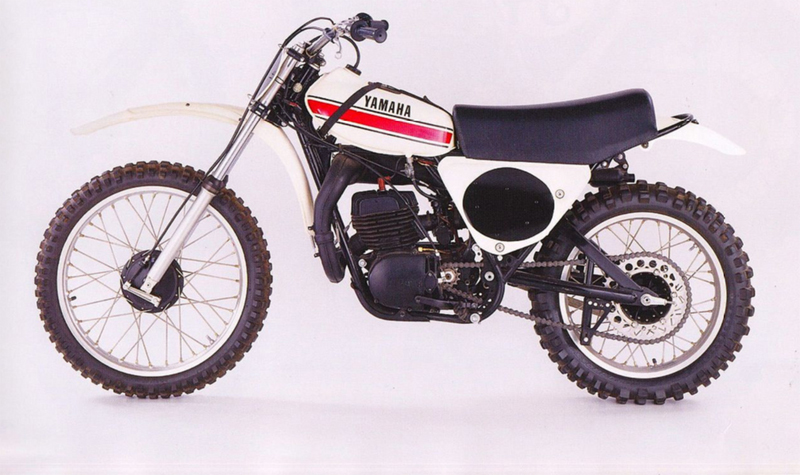
1. SINGLE REAR SHOCK
THE FIRST: 1974 Yamaha YZs
The first single-shock appeared on Yamaha’s 1974 YZ250/360, which also sported the works “strapped” alloy tank. The “Monoshock” was tucked right up under the fuel tank and, along with the rigid traingulated cantilever swingarm, the bikes were a marketeer’s dream. At the time, it was almost like cheating to be riding a Yamaha Monoshock, but the truth was that the single-shocks didn’t immediately create a quantum leap in performance. In fact, the whole single-shock concept only really hits its stride once it was coupled with the innovative rising-rate linkage designs that didn’t appear until the early 1980s – the most notable of which were Kawasaki’s “Uni-Trak” and Suzuki’s “Full-Floater” that was debuted on the amazing 1981-model RM125X.
2. O-RING CHAIN
THE FIRST: 1977 The Chain Gang
Big-horsepower road bikes used to destroy chains, so when Kawasaki’s Z900 arrived in the early ’70s with an O-ring chain, the floodgates opened for both road and off-road markets. In the mid-’70s, Aussie importer, Chain Gang, was the first to import “The Chain Gang” O-ring chains from Whitney Chains in America, and the boys did a roaring trade. Those early O-ring chains were heavy and robbed horsepower, but off-road riders – who were forever whingeing about chain and sprocket wear and the perils of throwing a chain – thought all their Christmases had come at once. In the early 1980s, DID released a dirt bike-specific O-ring chain – a vast improvement over the American-made units – and then an X-ring in the early ’90s, which offered better lube retention and much less drag.
Fortuitously for aftermarket chain distributors, manufacturers happily churned out production dirt bikes without O-ring chains for years, and it wasn’t until the emergence of more purpose-built enduro bikes of the early to mid 1980s that O-ring and X-ring chains started appearing regularly on production European dirt bikes. The Japanese, however, resisted the upgrade to O-rings until its WR range in the late ’80s.
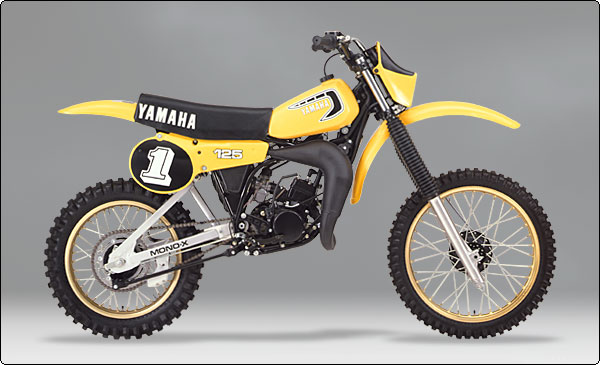
3. WATER COOLING
THE FIRST: 1981 Yamaha YZ125
Think air-cooled dirt bike and you think bulletproof old warhorse. You also think rattly, poor-performing shitter with massive tolerances built into its engine components to allow for expansion and contraction. Yamaha’s ’81 YZ125 changed all that when it appeared with a small radiator mounted up on the triple clamp. It looked weird and created problems as coolant was channelled through the steering stem and buggered bearings in no time flat. Not to mention how evil all that weight hanging off the handlebars was! But liquid cooling helped minimise heat-induced power loss experienced during a race, and it was clearly here to stay. In the following two years, most major manufacturers had introduced what we now regard as convention radiators that were mounted in front of the engine.
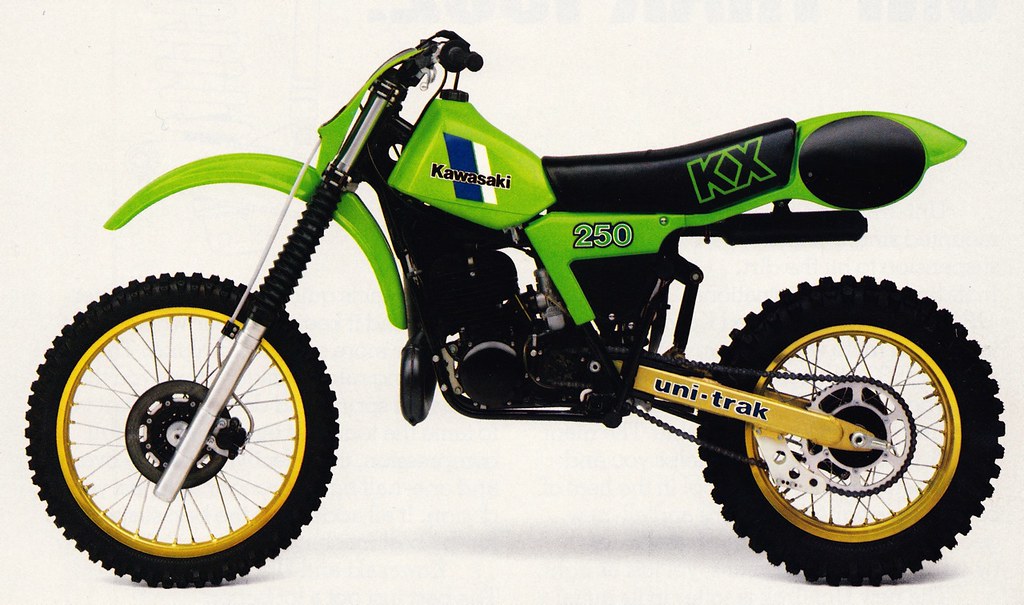
4. BRAKE DISCS
THE FIRST: 1982 Kawasaki KX250
A front disc brake first appeared with great fanfare in the early 1980s aboard the KX, but its master cylinder was so big, it looked like it belonged on a car! The early versions didn’t work as well as the twin leading-shoe front drum brakes at the time, and the master cylinder filled with air in a crash, leaving you with a useless spongy lever. But in the wet – where drum brakes were woeful – disc brake performance and wear gained a reputation for superiority. Developments to discs, callipers and master cylinders saw all the majors swap to front disc brakes by 1985, but it wasn’t until a few years later that discs found their way onto rear brakes. The most likely reason was cost considerations, as disc brakes had proved themselves to be effective and long-wearing by this stage.
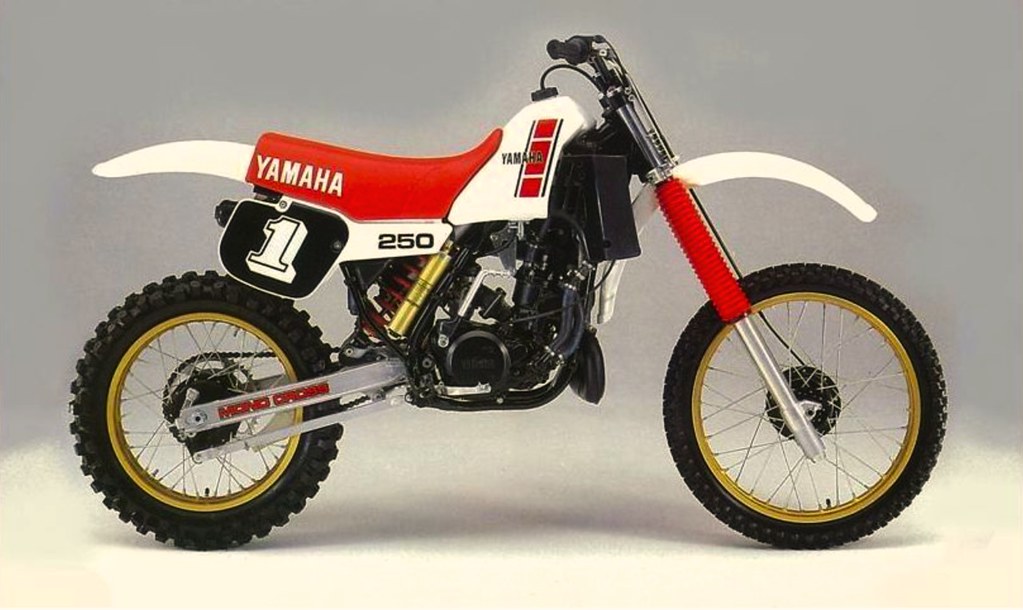
5. SAFETY SEAT
THE FIRST: 1983 Yamaha YZs
Check out some footage of cutting-edge riding style back in the late 1970s, and what strikes you is how far back the boys sat. It was partly the result of the ridiculously low handlebars and partly the old-school seat design, which forced you to ride the things like a Harley. After Ceet sold oodles of their aftermarket “safety seats” for a few years, Yamaha decided to bring out their ’83 YZs with the extra long seat as standard equipment. The gonad-friendly seats ramped up at the front and met the tank a lot further forward than the old-style seats, creating a much smoother seat/tank junction. This seat design revolutionised dirt bike performance because it allowed riders to distribute their weight much further forward on the machine. As a result, riding styles began to evolve from the old flapping-off-the-back look to the beginnings of the aggressive, balls-on-the-fuel-cap, elbows-up modern-day style.
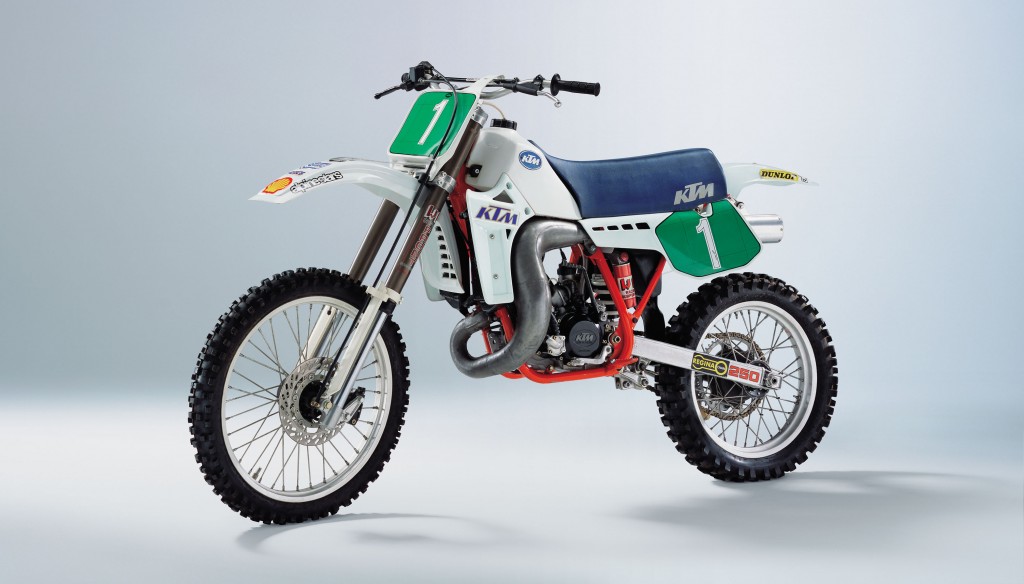
6. UPSIDE-DOWN FORK
THE FIRST: 1983 KTM 250MX
Contrary to popular belief that the Japanese pioneered USD forks, KTM was actually the first manufacturer to fit a WP upside-down fork to a production dirt bike in 1983. But early USD forks delivered a brutally harsh ride, and it was several years before the Japanese – led by the ’89-model Suzuki RMs – followed suite. Which was inevitable, really, as the USD fork made so much sense. Aside from drastically reducing front axle underhang, USDs also reduced unsprung weight and, by running the bigger-diameter stanchions in the triple clamps, allowed for more control over fork flex. In the years that followed, developments in the shape and wall-thickness of the alloy stanchions meant their flex could be better matched to that of the chrome slider, reducing stiction and bushing wear, and improving performance.
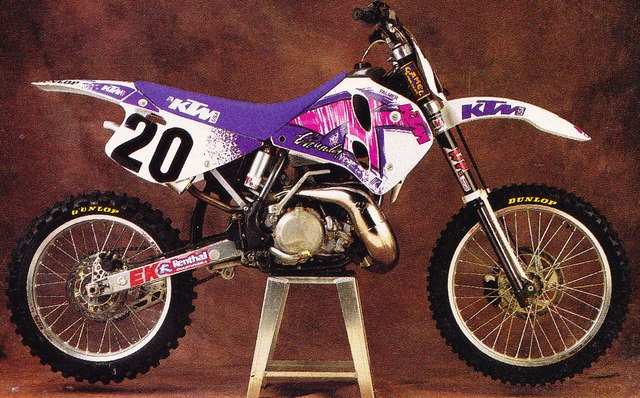
7. CAPTIVE NUTS
THE FIRST: 1993 KTM 250SX
While several manufacturers lay claim to using captive nuts in the early days, the Austrians were first to have the good sense to include a simple piece of hex-tube welded to the frame for the engine mounting bolts/nuts to sit in, and a little bit of extra steel bent over the end to hold the nut in place. It made the job of fitting or re-moving engine mounts and upper shock bolts a much easier one-tool affair. It also made everyone wonder why the hell other manufacturers hadn’t all copied the idea.
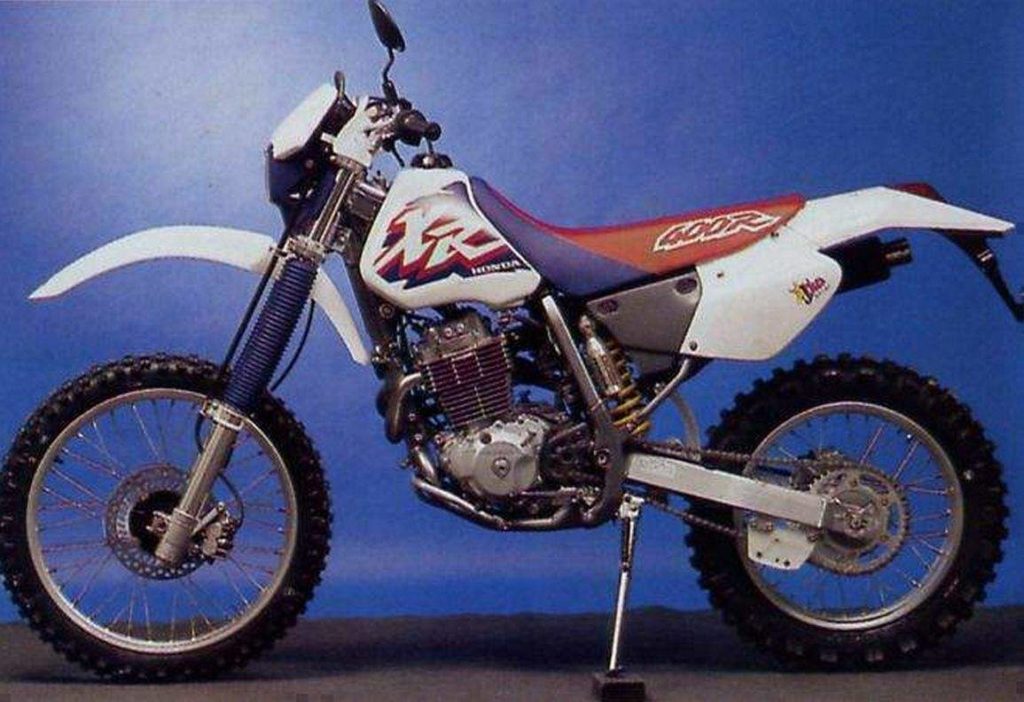
8. HINGED AIRBOX LID
THE FIRST: 1996 Honda XR400
In the early 1980s, Yamaha’s popular IT range ran a pop-off sidecover to access the airbox and a simple elastic strap to hold the filter in place – the first tool-free filter access on the market. But it wasn’t until the nifty hinged airbox lid on Honda’s you-beaut XR400 in ’96 that the idea really took off for the world’s growing population of trail and enduro riders. The XR400’s lid was fastened by only one Dzus clip and you didn’t have to put the thing down in the mud to change the filter. KTM advanced the idea in the late ’90s by introducing a simple and effective spring-clip design to hold the air filter in pace, replacing the fiddly wingnut several manufacturers still run to this day. And Yamaha didn’t introduce a similar, user-friendly set-up on their flagship WR-F range until 2006, some 25 years after their IT predecessors.
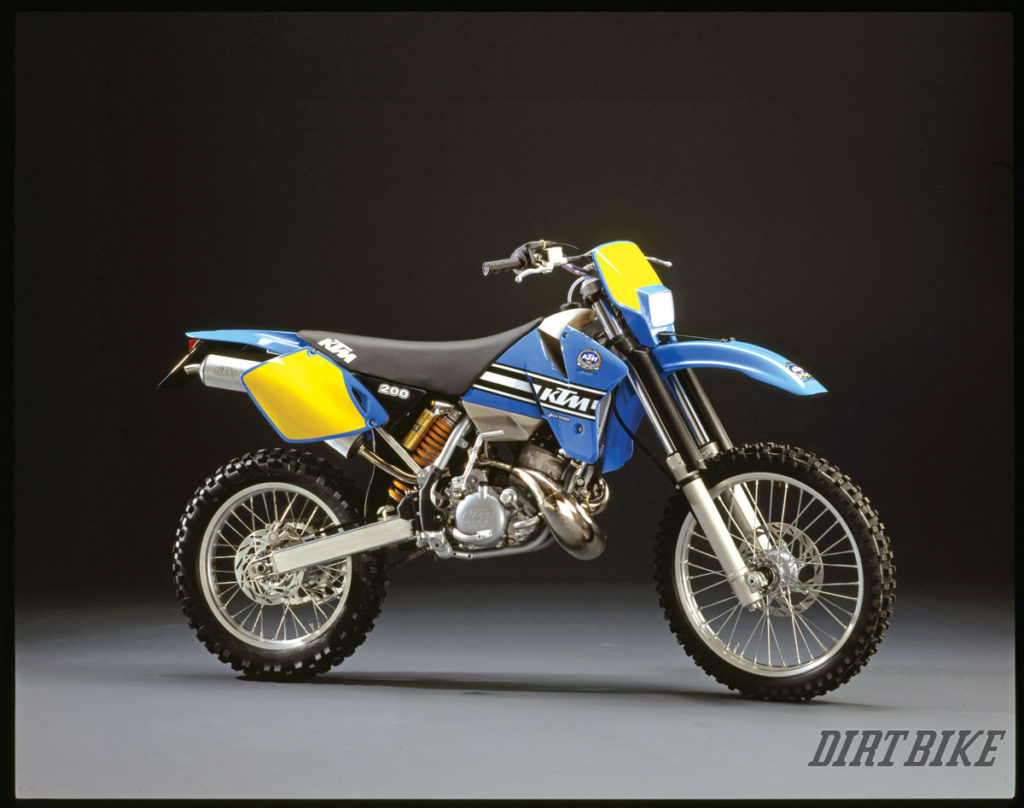
9. NO-LINKAGE SHOCK
THE FIRST: 1997 KTM 200EXC
American manufacturer, ATK, had been tinkering with no-linkage shock absorbers for years but didn’t have a whole lot of success. In 1997, though, KTM took the concept mainstream when it released its WP PDS (Progressive Damping System) shock on the 200EXC, and then on their whole EXC range in 1998. The no-linkage made sense for a lot of reasons: it was lighter than rising-rate linkages, required less maintenance, and it made shock removal a cinch. It also allowed the shock to be offset, creating a straighter path between the airbox and the cylinder head inlet ports for horsepower gains. Husaberg also ran this PDS system for many years, while BMW’s (short-lived) G450X also used a no-linkage, coaxial swingarm set-up.
Trail and enduro riders increasingly warmed to the no-linkage system over the past 20 years, but with American MX and SX riders expressing their distaste for the PDS set-up (which prompted KTM’s move away from the PDS and the fitment of a linkage to their MX models from 2011), Japanese manufacturers continue to distance themselves from any suggestion of a future that doesn’t include a rising-rate shock linkage.

10. ALLOY PERIMETER FRAME
THE FIRST: 1997 Honda CR250
While the ’97 CR250 was the world’s first production dirt bike with an alloy frame, the Honda design owed a lot to Yamaha’s 1991 YZM500 factory bikes. The ’97 CR250R sold like hotcakes, but it almost single-handedly kick-started the suspension tuning industry as riders blamed its bone-jarring ride on the Showa fork instead of the real cause: the too-rigid alloy frame.
Over the subsequent years, Honda produced several new-generation alloy frames, each refined to introduce flex where it was desirable without compromising the incredible torsional stiffness the alloy offered. And before long, the rest of the market was sitting up and paying very close attention to the marketable alloy frames. They’d also become cheaper to manufacture, didn’t fatigue, crack or stretch as readily as steel tubing over time, and they looked damn sexy on a dirt bike. These days, steel frames are in the minority, despite claims from KTM, Husky, GasGas and Ducati that they still outperform alloy.
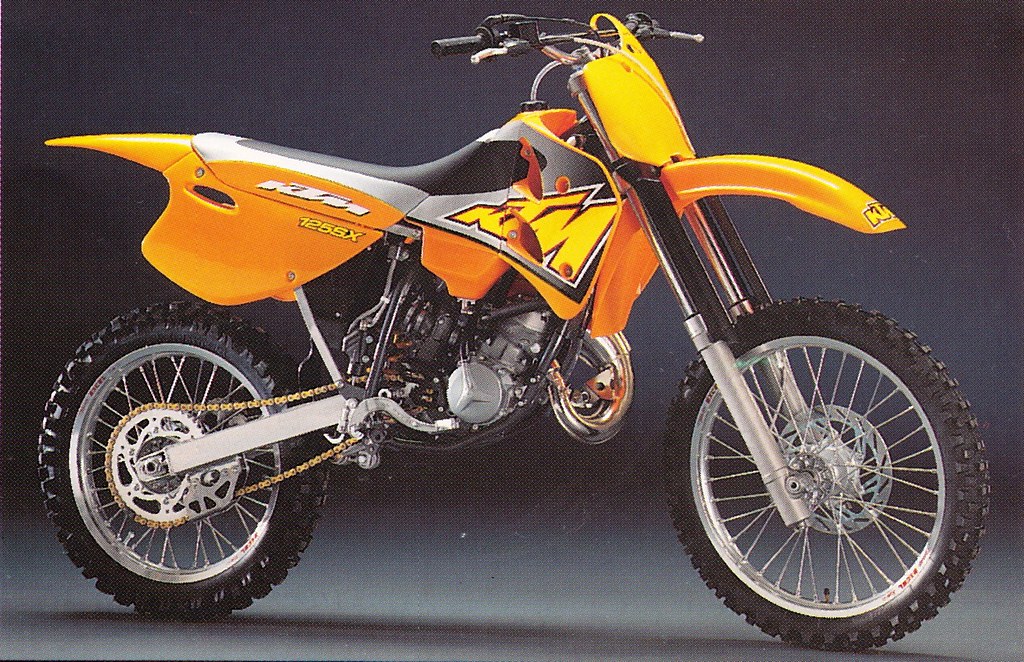
11. OFFSET CHAIN-ADJUSTER BLOCKS
THE FIRST: 1997 KTMs
Who would have thought that adding a little metal to the back of the axle block and making it reversible could make adding or subtracting two teeth on the rear sprocket so bloody easy? When KTM introduced their asymmetrical chain-adjuster blocks in 1997, it was a stroke of genius. Not only did it make gearing changes much quicker and easier – as you no longer had to add or remove chain links – but it also meant way less stress on the chain adjuster bolts. You could run a long wheelbase without having to wind the adjuster bolts way out, or a short wheelbase without having to wind them way in. It was a very simple solution that, surprising, has only been adopted by a few European brands in the time since. KTM also added alloy axle nuts, with the washer integrated into the nut, to complete a very trick set-up.
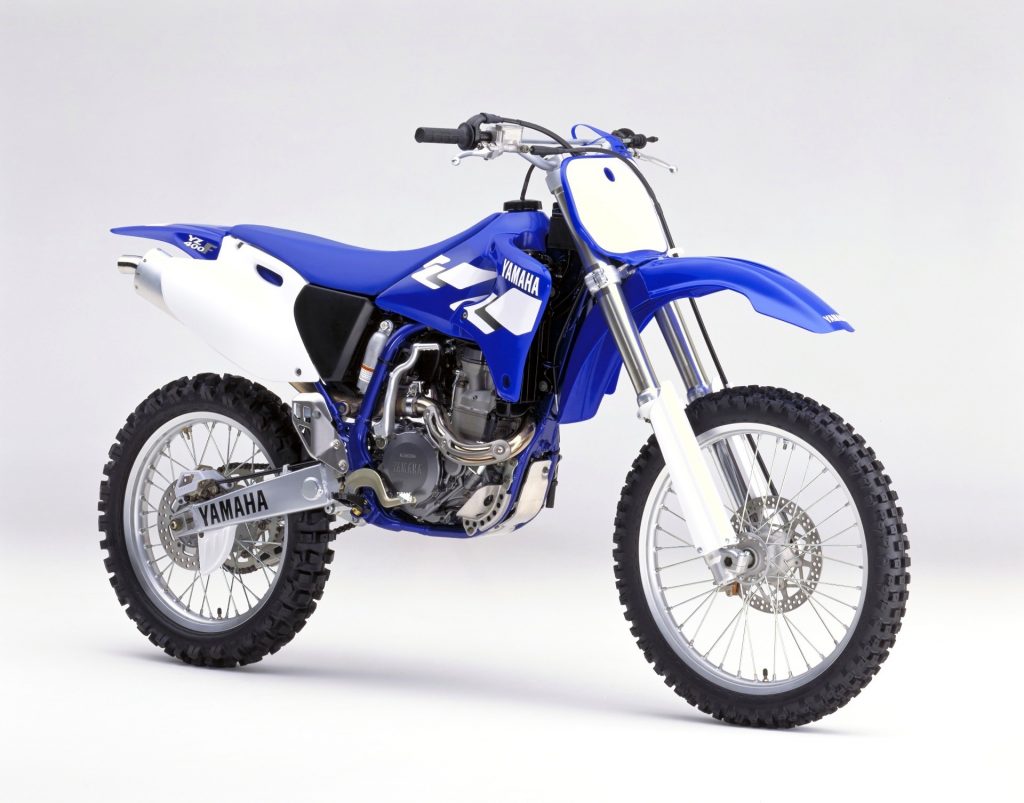
12. HIGH-PERFORMANCE THUMPER
THE FIRST: 1998 Yamaha YZ400F
When Doug Henry appeared on a pre-production version of Yamaha’s revolutionary new YZ400F in 1997, you could hear the scepticism in the AMA SX commentators’ voices. But when Henry created history and won that race in Las Vegas, perceptions changed forever. The following year, Yamaha released the world’s first Japanese-made four-stroke production MX bike – a machine that was, and still is, probably the most talked about dirt bike since Yamaha’s DT1 in the late ’60s or the revolutionary TT500 thumper in the late ’70s.
With its lightweight chassis, titanium parts and five-value head, the 1998 YZ-F had brought F1 technology to dirt bikes and immediately shifted the goal posts for all other manufacturers, for whom it instantly became a matter of joining the four-stroke party or dropping by the wayside. The YZ-F also marked a decade-long decline in two-stroke development and sales, a trend reinforced when Yami released the YZ250F – the world’s first 250cc four-stroke production MX bike in 2001 (since then, however, several European manufacturers have revived two-strokes to the point where they now represent more than half of their bikes sales!).
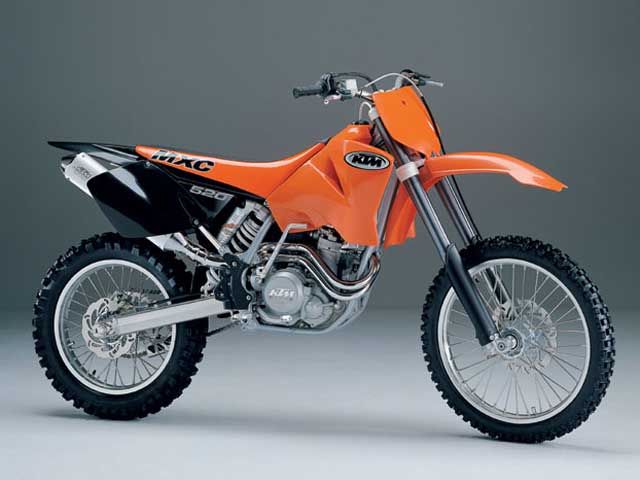
13. ELECTRIC STARTER
THE FIRST: KTM 2000 EXC four-strokes
Yamaha can actually lay claim to being the first production dirt bikes in Oz, with an electric leg appearing on the 1971 AT1-E (a 125cc mini-version of the DT1), the 1984 DT200L two-strokes and the 1993 TTR250. But it wasn’t until KTM fitted slick, lightweight electric starts to their all-new range of four-stroke competition enduro bikes in 2000, that the idea really went mainstream. It was only a matter of time until the rest of the majors caught up, but the head-start gave KTM a real foothold in the off-road market. Amazingly, it took until 2003 and 2004 for Yamaha and Honda, respectively, to join the electric-start party.
The beauty of the electric leg was that it attracted a lot of lazy, old, unfit blokes back to the sport; guys who loved the idea they would never have to kick-start a bike with their bung knee on a hillside or creek-crossing ever again. In 2008, KTM led the way again by fitting an electric start to its ever-popular 300EXC two-stroke, with the 250 joining it the following year – a move that reinvigorated sales for the already big-selling two-stroke enduro bikes.
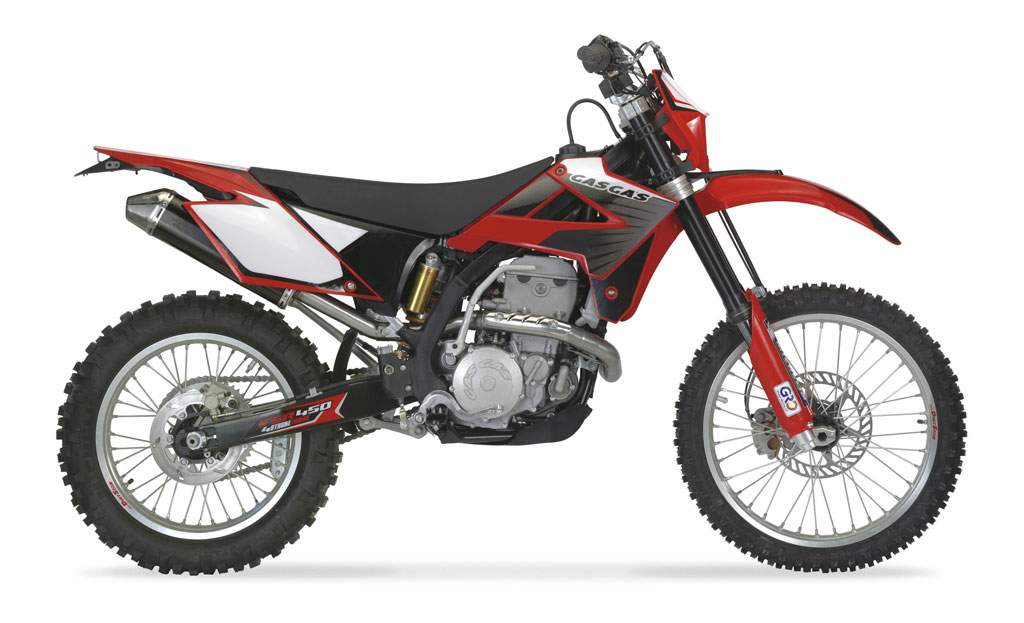
14. FUEL INJECTION
THE FIRST: 2002 GasGas FSE400
American-made Cannondale was actually the first production dirt bike with EFI, but the E440’s short-lived existence meant its impact was very limited. GasGas then took the world by storm when its 2002 FSE400 arrived with a lightweight Magneti Marelli fuel injection system. While road bikes had been fuel-injected for years, the off-road world was suddenly coming to terms with the benefits of fuel mapping, improved emissions and fuel economy, and ‘jetting’ that adjusted itself for changes in altitude, humidity, etc. The downside for the early EFI systems was consumer perceptions of complexity and an aversion to re-mapping bikes with computer software.
Sherco, Husky and Aprilia all introduced EFI on their four-stroke enduro bikes between 2004 and 2008, with Husaberg and BMW dumping their carbs in favour of EFI in ’09. On the motocross scene, Suzuki, Honda and Kawasaki all introduced EFI to their ’08 or ’09 450cc MXers, while Yamaha finally did so in 2010.
Notably, the compact EFI technology has done more than improve fuel metering: it has created space and opened up options for designers when it comes to the positioning of inlet tracts and engine mounting angles. Hence the ’09 Husaberg FE and BMW G450X and 2010 Yamaha YZ-Fs all swapping conventional fuel tank and airbox placement. In 2010, Yamaha also adopted the Cannondale-style reversed cylinder – that is, with inlet port at the front of the cylinder and exhaust header off the rear.

15. FORWARD-SLOPING ENGINE
THE FIRST: 2009 Husaberg FE450/570
For years, convention has dictated that dirt bikes are singles with pretty much upright cylinders – irrespective of the fact that small changes to mounting angles can create large differences in fore and aft weight distribution. Thanks to advances made with EFI and the space savings the technology offers, the Swedish minds behind Husaberg decided it was time to rail against decades of convention and tilt the engine forward in the chassis by an astounding 70 degrees. The idea with the 2009 Berg FE450 and 570 was to shift the crankshaft toward centre of gravity and, in doing so, minimise the gyroscopic effect on handling. In other words, to stop the bike fighting against itself, and make big-bore machines handle as if they were nimble 250s. Of course, the design necessitated a repositioned fuel tank and some creative work with an oil scavenger pump to avoid the bike drowning in its own lifeblood on downhills, but there’s no question the innovation paid handling dividends. Sadly, the sloping engine only lasted until 2012, after which the production cost benefits of a shared platform with KTM outweighed the perceived handling benefits of the radical 70-degree donk.
HONOURABLE MENTIONS (but still under consideration)
- The world’s first 2WD production bike: 2004 Yamaha WR450F 2-Trac.
- First production dirt bike with a slipper clutch: 2005 GasGas FSE450.
- First twin-cylinder production dirt bike: 2007 Aprilia RXV450.
- First production dirt bike with a steering damper: 2008 Honda CRF50X.
- First production dirt bike with a co-axial swingarm: 2009 BMW G450X.
- First production dirt bike with a reverse-mounted engine: 2010 Yamaha YZ450F.
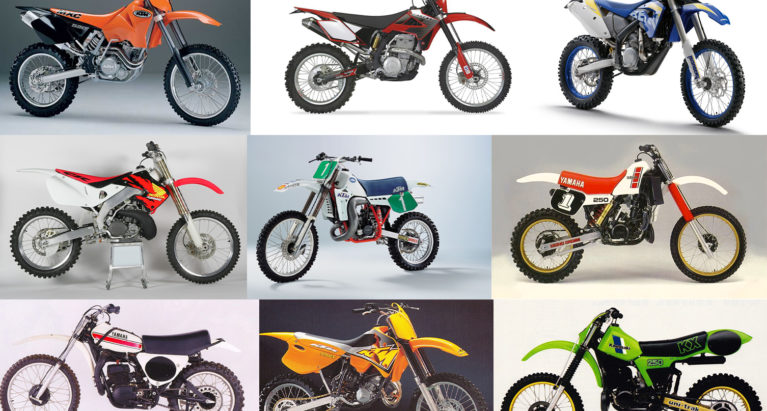


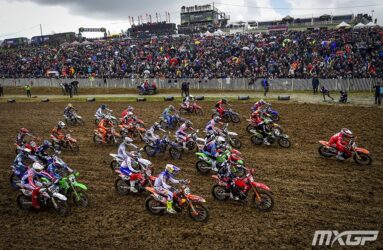


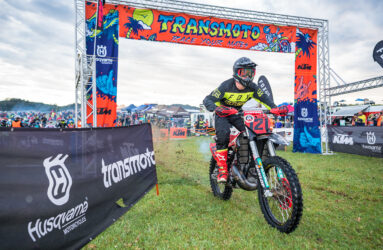


Be the first to comment...